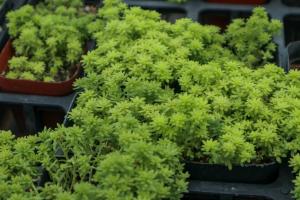How to Plant Russian Olive Trees
Russian olive trees, also known as oleaster, are some of the most stunning trees you can have in your garden. They have a unique beauty that makes them stand out from other trees, and their olives are rich in nutrients and rich in taste. These trees are also low maintenance and can withstand extreme weather conditions, making them an excellent choice for gardeners who want a hassle-free plant. Here's a comprehensive guide on how to plant Russian olive trees.
Getting Started
The first step to planting a Russian olive tree is to choose a suitable location for it. The tree requires at least six hours of direct sunlight per day, so pick a spot that gets plenty of sun. The soil should also be well-drained and slightly alkaline, with a pH of 7.2 to 7.9. If your soil is acidic, add a bit of lime to bring it to the right pH level.
Next, prepare the planting hole. Dig a hole that is three times the size of the root ball and deep enough to accommodate the entire root system. Loosen the soil at the bottom of the hole with a garden fork, and add some organic matter like compost, manure, or peat moss to improve the soil's structure.
Planting the Tree
Once you're ready to plant the tree, gently remove it from its container and examine the root system. If the roots are tightly coiled around the root ball, use a sharp knife to make a few slices in the root ball's sides. This process will encourage better root growth and prevent the roots from becoming root-bound.
Place the tree in the planting hole and fill it in with soil. Tamp the soil around the roots to remove any air pockets, and water the tree well. Add a layer of mulch around the tree, keeping it about two inches away from the trunk. This layer of mulch will help retain moisture and keep the soil cool, which is essential for young trees.
Caring for the Tree
After planting the Russian olive tree, it's essential to care for it correctly to ensure it grows healthy and strong. Water the tree once a week for the first year after planting, especially during the hot summer months. Young trees need plenty of water to establish a strong root system, but take care not to overwater them.
Prune the tree once a year, during the dormant season. Remove any dead or diseased branches, and trim away any suckers that emerge from the base of the tree. Russian olive trees can grow quite tall, so consider pruning them to maintain a manageable height.
Finally, fertilize the tree once a year with a slow-release fertilizer, preferably in the spring. Follow the manufacturer's instructions and avoid over-fertilizing, as this can damage the tree.
Conclusion
Planting and growing Russian olive trees is easy, and they require minimal maintenance. By following the steps outlined above, you can grow a beautiful, healthy tree that will provide your garden with an attractive focal point for years to come. Mature trees can even produce highly nutritious olives that can be enjoyed fresh or used to make oil. So, go ahead and plant a Russian olive tree and enjoy its fantastic benefits.

 how many times do yo...
how many times do yo... how many planted tre...
how many planted tre... how many pine trees ...
how many pine trees ... how many pecan trees...
how many pecan trees... how many plants comp...
how many plants comp... how many plants can ...
how many plants can ... how many plants and ...
how many plants and ... how many pepper plan...
how many pepper plan...































